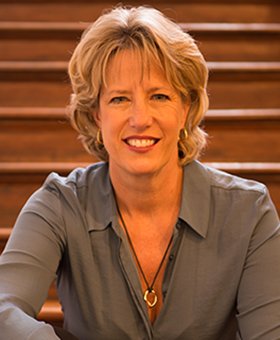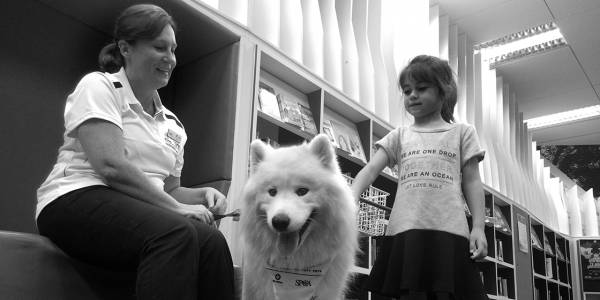OPINION
IMHO: New NFP governance book worth your time
There are few books written in New Zealand on governance and even fewer have a focus on charities.
New report analyses the environment in which charities and not-for-profit organisations operate.

A new report has been published on the for-purpose/not-for-profit sector which analyses the environment in which charities and not-for-profits operate. It aims to help organisations benchmark themselves against others in the sector, and can be used as guide to develop future strategies.
The 2021 New Zealand cause report, authored by JB Were's Head of Philanthropy John Morrow and senior research consultant John Mcleod, builds on findings from the 2017 cause report as well as the 2005 Johns Hopkins University research commissioned by Philanthropy NZ.
Key insights:
Whilst NFPs do not generate profit, they need operational surpluses to ensure their sustainability and viability in the long term. The report found that in the current environment organisations are doing more for less, and operating on tighter margins, despite greater uncertainties.
The sector's income growth rate over the last decade averaged seven percent per annum with average expenses increasing at a slightly higher rate.
With operating surpluses hovering just below the 10 percent mark there has been little room to explore innovation and improve overall resilience across the sector with many NFPs and charities dipping into their reserves to continue operations.

Hit the hardest were event-heavy sectors like sport and recreation, and arts, culture and heritage.
More than a third of the organisations sampled in the arts sector suffered a 50 percent or more decline in revenue. 27 percent of those in the sports and recreation sector saw similar declines.
Social services were also hard hit with higher demand for services. But those who were able to swim quicker than others were already utilising digital tools to provide their services, and had strong connections with their donors.
Morrow notes that when community groups are in good health, they can be highly active and innovative in the way they deliver support services, but for those operating in leaner circumstances, moving from crisis to crisis can compound negative effects.
He says the report shows numbers of new annual registrations for community organisations are still growing, but at a much slower rate. A decade ago, growth was around 10 percent, compared to 2020 which only saw three percent growth.
The arts, people with disabilities, education, and training and research have all seen a drop in new charity registrations.
According to Anne Rodda, the deceleration of registered charities in the arts sector isn’t representative of a decline in support. And she says within the sector, philanthropic donations have been steady regardless of Covid-19.
Rodda is a leader across several arts and education companies and her background includes consulting governments, NFPs and corporates.
She says the pandemic has elevated the role of the arts with people seeing a greater need to be entertained. And despite the cancellation of shows and loss of revenue in the sector, creativity has continued to thrive.
“We are already seeing the vast output – new paintings, novels, symphonies,” she says.
Rodda is quick to point out that "more Kiwi kids are learning to dance, rather than learning to play rugby."

Anne Rodda. Photo credit: Pah Sheena Haywood
But one frustration the sector continues to face is government funding and media coverage is more heavily-weighted to sport, rather than the arts. Part of that, she says, is about the sector taking ownership of the problem.
“I think the arts have not played a strong enough role in proactively demonstrating their value in common sense ways, and far too often, people jump to the conclusion that arts are for the hoi polloi.”
Over the past decade, annual donations have remained at a steady growth rate of 4.4 percent per annum.
Despite the onset of the pandemic last year Kiwis dug into their pockets to support charities. Not so much this year - total giving, including formal philanthropy, is expected to drop by 12 percent.
The decline does not bode well for charities, but Morrow says there is some hope in sight.
“History tells us that giving recovers fast after large declines, and we are similarly expecting that after this year.”
He says as a result, trustees have been looking closely at how their funding models have been affected by Covid-19, and how accelerating long-term trends will affect income over the next three years.
Volunteerism is an area that contributes $4 billion dollars per annum to New Zealand GDP with 9 out of 10 organisations relying solely on volunteer services. But with lockdowns, social distancing rules and limited face-to-face contact, volunteering numbers have declined.
The report also indicates that those who volunteer are increasingly younger. Michelle Kitney, head of Volunteering New Zealand says this has in part been due to some older volunteers having concerns about vulnerability to Covid-19.
“The pandemic has prompted a new wave of volunteers across different age groups to step up to do more to assist their communities. We know that young people are actively engaged in volunteering, and connecting and contributing to communities and causes they care about.”

Michelle Kitney, Volunteering New Zealand
Kitney is also seeing more volunteers shift away from long-term volunteering to short-term, project based, episodic volunteering, which might suit younger volunteers.
Morrow refers to this as one-off and micro-volunteering, and describes it as task-focussed work that is finite and fits within people’s busy lives.
While enabling more people to participate, the downside of one-off volunteering is that it requires greater coordination which puts pressure on staff or other volunteers charged with training and administration.
Funding is also a significant issue for volunteer organisations as volunteer promotion, engagement and management requires resourcing.
While the report notes that some sectors, such as health and education, have seen a shift towards a more skilled full time workforce, the report also notes a shift in other parts of the labour force towards the gig economy.
Once only familiar territory for freelancers, with an increasingly unstable economic environment, the labour force is heading increasingly towards short-term projects and contract and temporary work.
While some might benefit from the flexibility of participating in the gig economy, it could be problematic in the for-purpose sector where engagement needs to feel meaningful.
“My concern would be where the charity sector uncritically adopts the gig economy model. It creates new possibilities with how work is done, but the sector needs to take ownership of the digital tools to be fair and inclusive.”
Morrow says another challenge is maintaining the culture and commitment to organisational purpose.
“People in this sector are there because they have a strong sense of mission and they are often forgoing commercial rates to work for a purpose,” he says.
He adds that translating the gig economy to the for-purpose economy might not be the best way forward for charities where much of the work is relational, long term, and otherwise needs face-to-face contact.
He says the greatest implication could be around major donations, with many engaging with specific charities because they resonate with the people aligned with that purpose.

Social services have been hit hard during the pandemic
Morrow says the report highlights the important work being done by those in the for-purpose sector and allows charities and organisations to benchmark themselves against their peers.
The report also gives funding bodies a view on where the greatest needs are. In particular, with Auckland’s ongoing lockdown, charities are under immense pressure.
“During this lockdown, the Auckland City Mission had four times the demand for its food parcels, and you see a whole lot of other charities with food hubs that are overwhelmed, which I think is going to continue until we’re out of this lockdown.”
He says the food issue is complex.
“We’ve got such a major food issue and the immediate needs around food security are bigger than you think.”
He says when a family’s income is already stretched and a majority of it is going towards rent or mortgage payments, there is little flexibility to cut costs.
Trimming from weekly grocery budgets is the first port of call for struggling families who have members of their households home all day to feed, adding to increasing financial pressures, especially when work is not available.
According to Morrow there is no one-size-fits-all model.
“It really depends on the sub-sector you’re in...but a common consideration for this sector as a whole is to be able to move up on its digital adoption where it is safe to do so.”
Another opportunity for those in the sector pertains to charity buying groups.
“They’re quite well established in health and education, but in other sectors less so. So often we talk about ‘how do we help you raise more money,’ but the other side of that is how do we optimise your current operating model by improving your digital capability, but also by professionalising your procurement strategies.”
He says State of Flux, which developed a charity buying group from their experience with large international corporations, brings global procurement best practice into the sector, which will provide benefits to New Zealand charities.
But each sector is also likely to face its own set of constraints.
“For example the international activities' sector just doesn’t have much room to diversify its revenue. It has limited opportunities to earn income and is more reliant on philanthropic contributions than any other sector. The challenges of mass fundraising further accentuate the marginal sustainability of this cause, and support the case for major donations.”
Morrow suggests some key questions for trustees drawn from the 2020 JBWere report Heads down. Eyes up. Leadership in volatile times.
Download the 2021 New Zealand cause report from the JBWere website.
The report contains a breakdown of the performance of sub-sectors within the for-purpose sector in New Zealand. We're interested in views and persepctives from your sector. If you'd like to contribute, please contact Sonia Yee sonia.yee@iod.org.nz